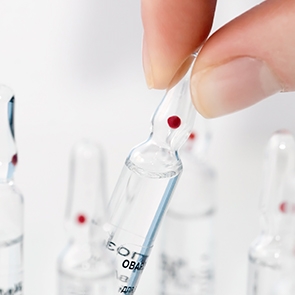In the previous article, we discussed four key trends shaping the Personalised Healthcare (PHC) model and how the profile of a patient’s genetic variation could be used to tailor drug treatments.
We already know that many conditions such as heart disease, cancer and Alzheimer’s are heterogeneous diseases that come in several clinical and histological forms. They are caused by a combination of genetic, lifestyle and environmental factors.
These complex diseases are often chronic and impose a huge cost burden on our healthcare system. While PHC, more accurately known as precision medicine (PMx), aspires to provide tools to better manage them, the scientific and practical hurdles that researchers, healthcare professionals and patients must overcome to “get there” is no mean feat. For many pharmaceutical companies, PMx means changing established practices in all aspects of the business—from the earliest stages of target identification and drug discovery, through to clinical development, regulatory approval, commercial development and operations, and sales and marketing.
However, many experts believe that we have now “reached a critical time to invest in innovation due to new technologies reaching an intersection of speed and precision and our unprecedented ability to target incurable diseases” [1]. This has been exemplified by the US National Institute for Health’s $2-billion budget increase for 2016—a sign of the growing importance of R&D [1].
This article will focus on some of the R&D challenges as organisations transition from the traditional blockbuster business model to the newer, PMx-based approach.
Finding the key factors of disease progression
At the earliest stage of drug discovery, scientists must identify genetically based drivers of the disease and determine “which target molecules to test for”. Consider cancer: solid tumours may contain tens, even hundreds of different genetic mutations. However, only some of these driver mutations are actually responsible for tumour growth and disease progression. The others, secondary mutations, are not directly associated with disease progression, but are abnormalities that accumulate with tumour growth. Scientists are interested in finding the drivers and then developing drugs that block these targets. Genomic tests can then identify and treat patients with those driver mutations.
However, at the moment, PMx is not quite as precise as that. Cancer cells have many different mutations; to decipher driver mutations from secondary mutations on a patient-by-patient basis is very complex. So far, scientists have only identified about 50 genetic mutations known to drive cancer [2]. There are thought to be hundreds of unidentified mutations, though. Consequently, genetic tests of tumours incorrectly show that there is no mutation known to cause the cancer. Worse still, even if a cancer-driving mutation is found, doctors cannot treat it because a drug does not exist or may only be approved for a different kind of cancer.
Although there are hundreds of experimental drugs in clinical trials that are designed to target specific driver mutations, we cannot be totally sure that the experimental treatment in question will even work in a particular patient. There are success cases like Vemurafenib, designed to target cancers linked to the faulty BRAF gene, but in other cases, such as BRAF mutant bowel cancer, treatments may only work in the laboratory or in only a minority of patients.
Therefore, different genetic mutations offer different levels of certainty when offering targeted therapy, indicating the need for an internationally agreed categorisation system. It would be helpful to know that, for a given genetic mutation, sufficient evidence exists that a specific experimental treatment will work and therefore merits clinical trials. This would save precious time, resources and money.
Biomarkers and Companion Diagnostics
However, before clinical trials can even commence, scientists must discover and develop biomarkers early in the drug discovery process (ideally at lead identification stage) and effectively translate pre-clinical models into clinical ones. The development of biomarkers to stratify diseases into better-understood, molecularly characterised subtypes requires access to well-defined patient populations and biological samples, together with longitudinal clinical data and medical and treatment histories.
Nowadays, scientists are trying to develop new drugs concurrently with biomarkers and Companion Diagnostics (CDx). Historically, CDx was a very different business from pharmaceuticals, with far lower profit margins, rendering it unattractive to drug companies. Diagnostic tests were only being used after drug development to rescue or increase drug value.
Under the current R&D model, researchers identify target patient subgroups using genetic tests and biomarkers in advance and then design drugs for these specific populations*.
The pairing of diagnosis and therapy will deliver improved R&D productivity, since the patient subgroups that will benefit from the drug will have been pre-selected before clinical trials. We would expect a better average response rate for drugs, currently 50% across all categories and just 22% in oncology [2]. This improvement, in cancer alone, would more than compensate for the cost of diagnostic technology, as shown in the case study below.
Changes to the clinical trial process
The clinical trial process is also changing to accommodate the new PMx era. In the past, clinical trials of cancer drugs were conducted by grouping patients according to cancer location, e.g. breast, lung or colon. Today, we know that cancers with the same driver mutation(s), irrespective of where they are in the body, share commonalities. Therefore, treatments are now being conducted on patients with the same cancerous mutations in different parts of the body. This means physicians need to take account of both the location and the mutation when selecting a treatment.
New types of clinical trials, such as adaptive clinical trials, have also been developed to reduce trial cost and shorten drug approval times. Adaptive clinical trials allow researchers to modify study parameters (e.g. dosing, sample size and schedule) according to accumulated data at prospective interim time points. This provides the best clinical outcomes.
Although the benefits of a more flexible, adaptive clinical trial are obvious, there are also practical challenges; for example, the number of treatment doses in the adaptive dose-finding stage can be significantly more than traditional clinical trials. This scenario, with its potential treatment variability and immediate response to the adaptive changes, can inherently increase the quantities of study drug needed.
As PMx advances in the oncology space, one of the most significant challenges arising is the lack of high-volume tissue samples. It is important to study tissue samples as a starting point for disease diagnosis, but also to understand what changes occur in the patient’s tissues during the course of a treatment. Scientists need to analyse individual’s tissue samples before, during and after treatment in order to plot treatment response and reaction variations across patients with the same disease type. This requires multiple samples from a given patient (which are large enough to understand the disease) and samples from many patients. Therefore, a better access protocol to well-characterised tissue samples of high quality is paramount.
Next steps and combination therapy
In oncology, patients are more likely to benefit from combination therapy—the treatment of multiple mutations simultaneously in order to stop tumour progression from the start of treatment. Ideally, if we know that a patient will benefit from combination therapy as opposed to monotherapy, the patient can avoid trying out various drugs unsuccessfully while the cancer continues to progress. However, identifying and validating combination drug therapies is very complex and the current clinical trial process is not set up for such testing, but rather for studying drugs individually and in comparison. Therefore, the current regulatory and drug approval system must adapt to support simultaneous testing of multiple drugs.
Finally, PMx is only possible because of the speed with which we can now sequence the human genome. The plethora of data generated from genetic tests and clinical trials requires sophisticated technology platforms to store and intelligently analyse the data to draw meaningful real world conclusions.
Education is also critical. Most physicians are unable to interpret genetic test results and, therefore, do not request that patients have these conducted in the first place. Patients need to understand how genes play a role in disease and the benefits of genetic testing. Pharmaceutical companies, payers and insurance companies need to acknowledge the importance of biomarkers and diagnostics so that they can support discovery of treatments that work.
In the next article, we will focus on the business challenges associated with PMx, in particular, the changes in the regulatory and reimbursement landscape to enable advancement of PMx.
Case study: PMx creates value
Better targeting allows physicians to begin effective treatment earlier while avoiding costly treatments that offer little value, and often come with side effects.
Today’s targeted approach to cancer care is redefining traditional treatment patterns; we no longer want to do everything that might help a patient, but rather, we should do exactly what the patient needs, based on the unique molecular profile of his/her disease.
By pairing diagnostics with specific drugs, pharma companies can offer more value to all parties; patients receive the “correct” treatment, hospital costs are reduced, clinical trials show greater success, and the reduction in adverse events decreases nasty lawsuits. The potential savings to the system are huge.
Consider Herceptin: the drug costs $79,181 per patient when a diagnostic is not used. But when it is used only with patients who will respond, the cost drops to $53,738—a difference of $25,443. Consider all the drugs that failed approval after clinical trials because they did not show efficacy in enough patients. If it were possible to find the gene expression and molecular pathway of the subgroup of patients that responded, those “failed” drugs could potentially be resurrected and even save many lives. This approach of testing for precision with diagnostics costs more initially—which is probably why it is not already being used widely. But pharma companies need to stop thinking about the short term, and begin considering how they can better pair a diagnostic with a drug in order to succeed in the long term.
References:
[1] Joe Jimenez, CEO, Novartis, 22 March 2016, “A Critical Time to Invest in Innovation”.
[2] Popular Science, 27 August 2015, “Everything You Need to Know About Precision Medicine”.
*This process has been held back somewhat by cost; the first human genome sequence cost $3 billion and took many years to completely map. Today, costs are decreasing and the effectiveness is rising exponentially. Several companies offer personal genome sequencing for a few thousand dollars or less; within 10 years, there is an expectation that sequencing a personal genome will take only an hour and cost a few hundred dollars, or less than an MRI.





